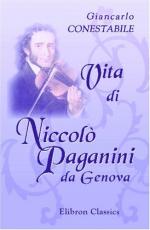|
This section contains 719 words (approx. 3 pages at 300 words per page) |

|
Music: Courts and Patrons. In 1784 a contemporary estimated that there were nearly 350 composers in German-speaking Europe. Most of them were employed in aristocratic houses and considered little more than upper servants. They were expected to write pleasing music according to the accepted standards of classical composition (symmetry and regularity) and perform it for their patrons and guests. Over the course of a career a musician's compositions could—as in the case of Alessandro Scarlatti (1660-1725)—exceed one thousand works. Most of these composers were more craftsmen than artists, but within their ranks were Joseph Haydn (1732-1809) and Wolfgang Amadeus Mozart (1756-1791). Indeed, Mozart wrote twenty-seven symphonies in 1774-1777, while in the employ of the prince-bishop of Salzburg. Powerful patrons could vault their cities to the forefront of the music world, as King Frederick II "The Great" of...
|
This section contains 719 words (approx. 3 pages at 300 words per page) |

|




